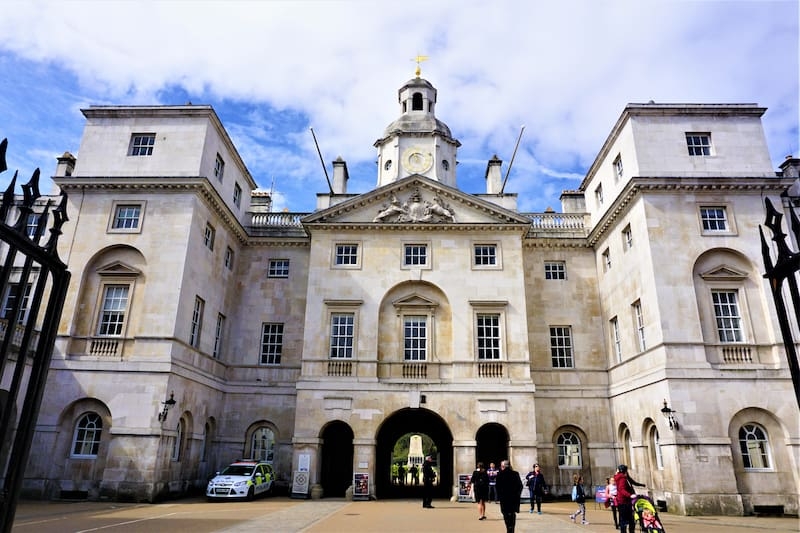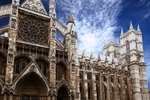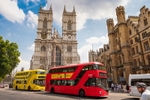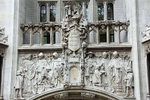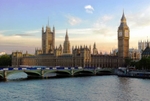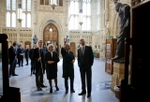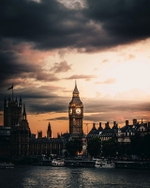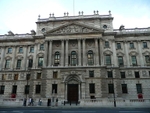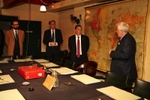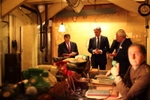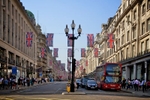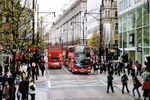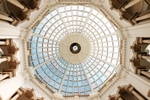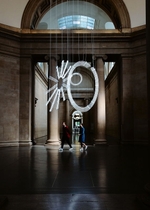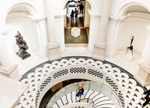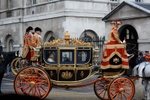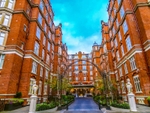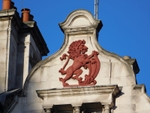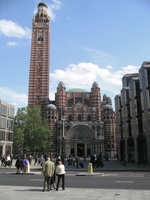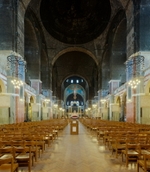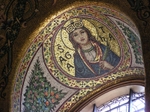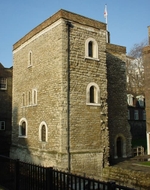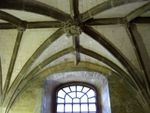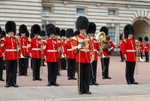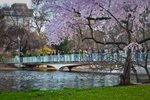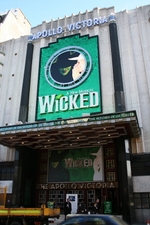1. Westminster Abbey
Westminster Abbey has been a focal point of British history for the past 1,000 years.
The scene of royal coronations since 1066, plus numerous royal weddings and funerals, this stunning building is a must see for any Westminster visitor.
A stone’s throw from the Houses of Parliament, Westminster Abbey emphasises the importance of religion through British history.
The Abbey remains a royal church and is open for worship and daily services. Visitors to Westminster Abbey can book tours on selected days of the week to see the spectacular interior. The Coronation chair in St George's Chapel, the stunning Chapter House, the Quire and The Cloisters are some of the must see areas of the Abbey.
Make sure to look out for the grave of the Unknown Warrior in the nave and head to Poets Corner, where over 100 poets and writers are buried or have memorials. They include William Shakespeare, Jane Austen, the Bronte sisters and Charles Dickens.
Among the tombs in the Abbey marking their final resting place are those of Edward the Confessor, Elizabeth I, Henry VII and Mary Queen of Scots. Over 3,000 famous names from Britain's past are buried within this iconic building.
2. Big Ben and the Houses of Parliament
There are not many places which instantly connect you to a city in the way Big Ben does to London.
This much loved and much filmed tower is probably the most famous clock in the world.
Big Ben is the name of the huge bell within the Elizabeth tower, the tower having been renamed in 2012 to mark the monarch’s Diamond jubilee.
Big Ben overlooks the Houses of Parliament and is undergoing extensive conservation work in 2021, with tours unavailable during this period. However, it is still well worth a view from Westminster Bridge, allowing you to take in the scale of this magnificent structure. From there you can head on toward Parliament.
The Houses of Parliament tour takes around 90 minutes and gives you access to the House of Commons, House of Lords and Westminster Hall, with its stunning hammer-beam roof.
The tour guide is available in a number of languages with adult concession prices starting from £19, providing you access to the heart of British democracy.
3. Churchill War Rooms
This hidden gem allows you to descend to the secret corridors where Winston Churchill led the British wartime operations.
This must-see attraction lets you sample just how the British government functioned during some of the darkest hours the country has known. This is an authentic experience which takes you back in time.
You will visit the Cabinet war rooms from where Churchill led the British war effort, as well as the essential map rooms where progress was charted. During your tour you will learn all about the lives of the hundreds of men and women who kept this vital operation running. You will even be able to have a look at the bedroom where Churchill would occasionally sleep.
In 2005 a museum dedicated to Winston Churchill was added to the site, providing a fascinating insight to his life. The Churchill War Rooms are located at the Clive Steps on King Charles Street. It is part of the Imperial War Museum group, with free entry for IWM members. Adult concession admission prices start from £22.50 without a Gift Aid donation.
4. Buckingham Palace
Buckingham Palace sits proudly at the end of The Mall, an instantly recognisable symbol of British royalty around the world.
For the last two decades the Palace has opened its famous gates to visitors who can now explore the sumptuous state rooms, as well as see the throne chairs used in the coronation of Queen Elizabeth II.
Further highlights of a visit to Buckingham Palace include the Music room with its stunning parquet floor, the huge Ballroom and the iconic grand staircase. The Palace is also home to a major collection of paintings, including pieces from Rembrandt, Rubens, Titian and Van Dyck. After touring the lush interiors you can head out and enjoy the 150 acre Palace gardens.
This is a rare opportunity to visit a working royal palace. Visitors are admitted between July and September with a family ticket available that includes two adults and three children. There is a shop where you can buy your mementos, while picnics are allowed in the garden.
5. Shopping
Westminster has some of the busiest and most well known shopping streets in London.
Visitors to Westminster will be spoiled for choice and will find flagship stores of many prestigious brands located here.
Oxford Street
Oxford Street is a major shopping destination, attracting around 200 million visitors every year. Flagship branded stores and huge department stores pack the street to bring you the best choice in fashion, jewellery lifestyle, homeware, music and more. Stores and brands on Oxford Street include Selfridges, Uniqlo, Nike, Zara, House of Fraser, M&S, Swarovski and John Lewis.
Regents Street
Regents Street is another prestigious shopping street, packed full of top international brands. Fashion, lifestyle, homeware and technology stores are all well represented here. It is also the place to head to find boutique designer stores. Among the brands located on Regents Street are Anthropologie, Calvin Klein, Burberry, Kate Spade, Liberty London and Michael Kors.
Bond Street
Many of the stores you will find on Bond Street are flagship stores of prestigious fashion and lifestyle brands. Bond Street promotes a luxury shopping experience, but the street also has a reputation for jewellery and art. Brands you will find on Bond Street include Jimmy Choo, Gucci, Givenchy, Emporio Armani, Fendi and Dolce & Gabbana.
6. Tate Britain
Located on Millbank, the Tate Britain is home to a collection of historic British art, as well contemporary art from around the world.
There are 13 rooms where you can explore British art since the 16th century, including works from William Hogarth, Joshua Reynolds and John Constable.
There are two rooms dedicated to the sculptor Henry Moore, while the gallery also houses the largest collection of paintings by J.M.W. Turner. There are nine rooms exhibiting the Turner collection, which also includes the popular Mark Rothko Seagram murals.
Admission to the Tate Britain to see these masterpieces is free, although there may be a charge on some exhibitions. The gallery is open every day from 10am and has two shops where you can buy gifts and mementos, plus a restaurant and cafe for your well earned refreshments.
7. The Household Cavalry Museum
This lovely little museum presents the history and current working practices of the regiment.
The Household Cavalry was formed in 1661 and its mounted regiments continue to guard the Queen at ceremonial events. The regiment also participates in duties around the world in armoured fighting vehicles.
The museum is a living, working museum giving visitors an up close experience of how the regiment has operated across the centuries and how it still operates today. One of the highlights of the visit is being able to watch the working stables through a large glass partition.
The museum has a fascinating collection of military artefacts from across the years, some of which are very rare, but all with stories to tell. Being a working museum there is always something going on. The museum is located in Whitehall and is normally open daily from 10am.
8. Food & Drink
Westminster has plenty of choice when you are looking for somewhere to eat and drink.
Fine dining, great pubs, brasseries and cafes cater for all tastes. The following are a selection of examples among the many excellent Westminster options.
Caxton Grill at St Ermin’s
This hotel restaurant uses the freshest seasonal ingredients to serve flavourful modern dishes. The rooftop kitchen garden provides the inspiration for many of their dishes, assuring you that the phrase freshest seasonal ingredients is no marketing gimmick. The all day menu has grill favourites plus salads and stone baked pizzas. A breakfast menu and a children’s menu are also available.
The Cinnamon Club
Enjoy Indian fine dining in the setting of a grade II listed building, the former Westminster library. The restaurant offers contemporary Indian cuisine, combining traditional authentic cooking with their signature modern dishes. Set in the heart of Westminster, this elegant restaurant has a range of lunch and dinner menus. Two course set lunches start from £25 with a two course dinner from £30.
Brasserie of Light
Located at Selfridges’, this art-deco inspired restaurant offers a range of British and international dishes. This unique setting features work by the renowned artist Damien Hirst. Classic dishes are served daily, with a breakfast menu also available until 11.30am in the week and 11am at weekends. The Brasserie of Light is also ideal for afternoon tea, although those looking for something a little stronger can sample from the range of Selfridges’ heritage inspired cocktails.
The Red Lion
This is a classic, traditional pub on the doorstep of the Houses of Parliament. The interior is a mix of the grand and the quirky, with chandeliers adding to the cosy, elegant feel. A choice of six deep-filled pies feature on the main menu, which can all be accompanied by a pint of Fullers ale. Added to the menu on Sunday is a choice of three roasts, including a vegetarian option.
9. Westminster Cathedral
You could be forgiven for overlooking Westminster Cathedral due to the proximity of the more famous Abbey.
However, the striking architectural design and the interior of the cathedral are worth a visit. The cathedral’s foundation stone was laid in 1895 with the building structure completed in 1903.
The brick design with its terracotta and white stripes is striking enough. Add the many domes and circular towers and the artistic merit of the design becomes even more enhanced. The interior certainly does not disappoint either. The cathedral nave is vast, and the building contains a series of beautiful murals. Over 120 different marble types help decorate the interior, adding lovely patterns and dashes of colour throughout the building.
Visitors can attend the daily masses to experience a working cathedral. The Tower viewing gallery offers visitors stunning views across London, with admission starting from £3. The cathedral also has an exhibition where you can see a collection of rare objects, relics and chalices, as well as learning all about the history of this architectural gem. Admission to the exhibition starts from £2.50.
10. Jewel Tower
The Jewel Tower survived a fire in 1834 which destroyed most of the Palace of Westminster.
The tower provides visitors with a link back to medieval England. The tower’s original purpose was to house the royal treasure of King Edward III. It has served many functions since then, which are all explained in a fascinating exhibition set across three floors.
The Jewel Tower is located opposite the Houses of parliament, and as visitors wonder around the exhibition they have the privilege of seeing ornate ceiling carvings dating right back to the 14th century. Being able to witness original 14th century craftsmanship is a rare experience and one to be enjoyed.
This small tower steeped in history is run by English Heritage, whose members receive free admission. Concession prices for non-members start at £5.30, with two family ticket options also available.
11. More things to do in Westminster
Westminster sits right at the heart of historic London and offers so much for visitors to do and see.
Below are a few more suggestions of places to visit in Westminster.
Admiralty Arch
Admiralty arch was commissioned in memory of Queen Victoria, with its grand arches an access way on to the Mall. This landmark grade 1 listed building is well worth a visit to see its intricate architectural design. The building has served as government offices, but was sold in 2011 and given permission to be renovated as a hotel in 2013.
However, Admiralty Arch still plays a major role during ceremonial parades and events. As well as royal processions still going under its famous arches, it has been used as part of the route for other major occasions in the capital, including being part of the route for the London 2012 Olympic marathons.
St James Park
This popular park sits amid Buckingham Palace and the Houses of Parliament, offering a great place to relax while touring Westminster’s iconic landmarks. This is the oldest of the Royal parks and sits adjacent to the Mall. St James Park is a haven for wildlife, as well as containing many important statues and memorials. A large lake forms the central area of the park, while the formal Buckingham Palace flower beds are always a lovely sight. If you take a stroll across the lake’s Blue Bridge you will get spectacular views toward Buckingham Palace on one side and Big Ben and the London Eye on the other side.
Changing of the Guards
Royalty in London is about tradition, and nothing exemplifies this more then the Changing of the Guard ceremony. This is when the old guard protecting Buckingham Palace are relieved by the new guard. For much of the year this ceremony happens on alternative days, but during June and July it takes place every day.
The ceremony occurs between three sites – Buckingham Palace, St James Palace and Wellington Barracks. The official start of the ceremony is at 11am from the Buckingham Palace forecourt and anyone can watch as the guard files past. If you hear a shout of ‘Make way for the Queen’s Guard’ you know someone is in the way and needs to move to one side sharpish.
Apollo Victoria Theatre
Catching a show when in London will be high on many people’s to-do list. Visitors to Westminster have many theatres in close proximity. One of these is the Apollo Victoria theatre in Wilton Street, currently home to the production of Wicked.
Wicked has been delighting Apollo theatre goers since 2006. This former cinema seats 2,328 people in comfort within its unique art-deco designed interiors. The Elixir bar is open to ticket holders, providing a relaxed environment where you can enjoy a pre-show drink, with further bars on all levels of the theatre.


